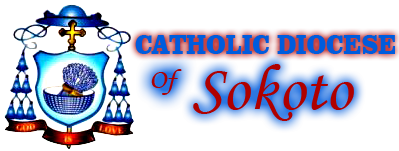The Ecclesiastical jurisdiction known as Catholic Diocese of Sokoto covers four States: Sokoto, Zamfara, Kebbi and Katsina – all located in the North-West and Muslim dominated region of Nigeria. The headquarters of the diocese is at the seat of the Caliphate.
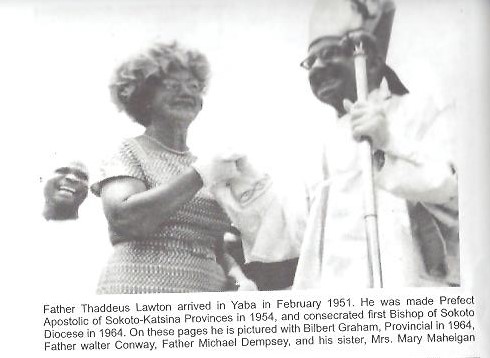
The history of the Catholic Diocese of Sokoto begins with the epic transitory visit of the Belgian Fransciscan brother, Brother Peter Farde, who earned his freedom from captivity in Agadez. Brother Farde traveled south from Agadez passing through present day Sabon-Birni, Shinkafi, Gusau and Kankara then to Kano. It is believed that he baptized as many as 200 slaves including Hausas. In 1870 two Franciscan Priests from Agadez traveled down to Katsina. No significant pastoral work was done then; moreover death was not so sympathetic with them. The history of the Catholic Diocese of Sokoto could also be traced to the missionary journey of Father Berengario Cermenatti, SMA, who visited Sokoto in November 1921, traveling the 400 kilometers bicycle ride from Zaria to Sokoto, accompanied by his cook Mallam Audu which led to establishment of the Catholic Church in Sokoto town.

The creation of the prefecture of Northern Nigeria in 1929 with Monsignor Francis O. Rourke, SMA, as the first Prefect Apostolic and with the growing Catholic population in Kano, Shendam and Zaria, Priests like Father Malachy Gately who was Superior of Zaria in 1933 when Father John MacCarthy, SMA (later Archbishop of Kaduna) went on leave and within a short time began to explore far away Sokoto Province to make contact with Catholics who were mostly from Southern Kaduna. The division of the Prefecture of Northern Nigeria into two in 1934, one part being the Prefecture of Kaduna under Monsignor Thomas Hughes and the other Prefecture of Jos under Monsignor William Lumley. Father John MacCarthy, SMA, (later Archbishop of Kaduna) and Father Patrick Lee were sent to Argungu to choose a site for a new mission towards the end of 1934 in Sokoto Province to the resident J. H. Carow in Sokoto and having received the necessary permission, building of the first rural mission station in the Prefecture for work among Northerners, especially the indigenes of the Province, the Maguzawa, the non-Muslim-Hausa people began in September 1935.

The need to having a Prefecture in Sokoto was raised in 1937 by the Papal Apostolic delegate to West and East Africa, Archbishop Antonio Riberi on a visit to the Prefecture of Kaduna.
With the activities of the Society of Africa Missions (SMA) Priests in Zaria, Gusau, Sokoto and Argungu, there was Missionary expansion in Argungu with the last entry in the Argungu Mission by Father Gerald Scanlan in 1947 before his transfer to Masuga in 1948 when the Mission was closed; with the closing of Argungu mission, Gusau got a resident Priest, Father Daniel Watson.
Rev. Father Gervase, O.P., who was a member of the Dominican Order had urged the Dominican authorities since 1949 to establish a presence in West Africa and this was achieved in 1951 when Archbishop Taylor gave them the parish of Yaba in Lagos; St. Dominic’s Parish. Archbishop David Matthew, Apostolic delegate to British West Africa has also asked them to undertake evangelization in the North-West of the country especially in the proposed Prefecture of Sokoto and Katsina. Gusau resumed its former position as an out-station of Zaria Mission in 1952 when Father Peter Gilroy came to live there. His stay was short however, because on 19th June, 1953 the civil Provinces of Sokoto and Katsina covering a total (45,943 square miles) were ditched from Kaduna Prefecture to Sokoto which was to be administered by the Dominican Friars from Chicago, USA. This led to the establishment of six Catholic Missions in Sokoto, Gusau and Yelwa in Sokoto Province then Katsina, Funtua and Malumfashi in Katsina Province.
The Dominicans accepted the responsibility which led to the appointment of Monsignor Edward Thaddeus Lawton, O.P., as Prefect Apostolic of Sokoto Prefecture in 1954. He was consecrated in a ceremony at the St. Pius Catholic Church, Chicago, USA and left on 14th March, 1954, arriving Gusau and taking charge of the Prefecture on 13th November 1954. Gusau was the only residence for Missionaries in the 45,943 square miles of the Prefecture whose 1,200 Catholics were scattered among five million inhabitants, vast majority many of whom were Muslims.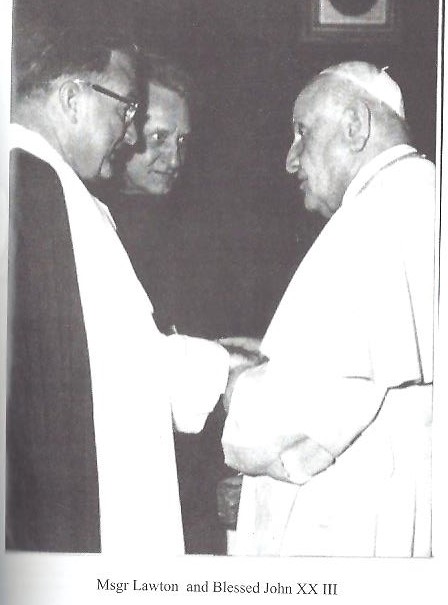
In 1955 Gusau which was an out-station of Zaria Mission became a Parish due largely to the efforts of Monsignor Edward Thaddeus Lawton, O.P., who worked hard to see that it materialized because he saw Gusau as his headquarters.
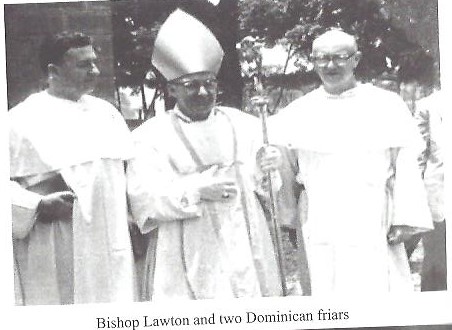

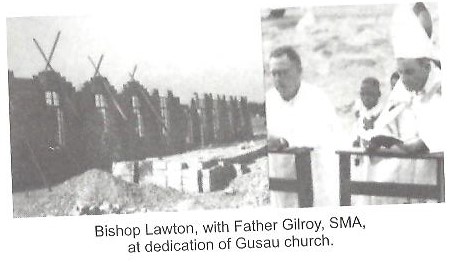
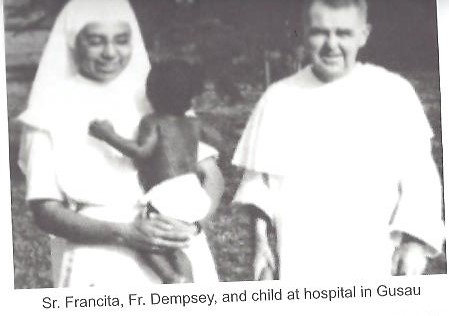
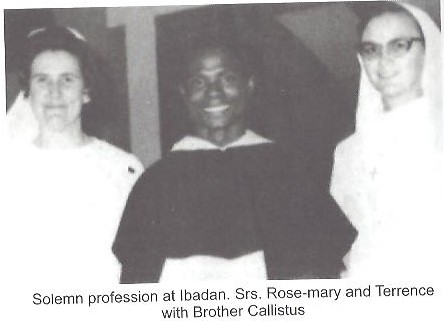
In 1956 Father Louis Nadeau, OP, became the first resident Priest in Sokoto. He moved into Sokoto from Gusau and from the temporal quarters made available to the Church by the Ambrosini Trading Company he was able to supervise the construction of the present Cathedral Church in Sokoto, Holy Family Catholic Cathedral, Sokoto.
In 1961 Monsignor Edward Thaddeus Lawton, OP, moved his headquarters from Gusau to Sokoto because Sokoto was the administrative headquarters of Sokoto province. Sokoto Prefecture was raised to the status of a Diocese on 16th June, 1964 with Monsignor Edward Thaddeus Lawton, OP, appointed as Bishop. He died of Coronary Thrombosis in the car about 20 miles out of Sokoto on his was to Kaduna on 19th December, 1966.

On the feast of Assumption of the Blessed Virgin Mary, 15th August, 1967, Bishop James Michael Dempsey, OP, was consecrated Bishop of the Diocese of Sokoto, in Chicago, USA. It must be mentioned that the Nigerian civil war which lasted from 1967-1970, not only took its toll on the smooth functioning of things in the Diocese, but also constituted a setback to the development of the Diocese. After the Nigerian civil war in 1970, Christians from around the country began to flood into the Diocese of Sokoto. The 1970s were the years of the oil boom and the Church, the economy and society began to bounce back. Under Bishop Dempsey, the Catholic Diocese of Sokoto was built up far beyond what it was before the Nigerian civil war 1967-1970, young men were sent to the seminary and ordained.
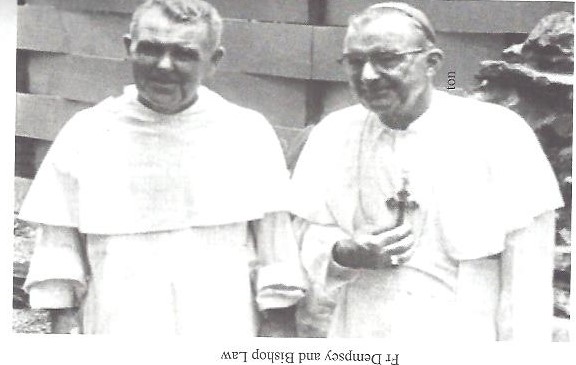
He opened the Catechetical Training School at Malumfashi, now known as St. Joseph Mukasa Catechetical Training Centre, to train Catechists for the whole of Northern Nigeria. Bishop Dempsey made considerable efforts to have good relations with Muslims and ecumenical cooperation with other Christian Churches. Bishop Dempsey suffered several minor strokes and other health problems. He also felt the handicap of being the only “alien” (non-Common Wealth) Bishop in Nigeria. These were some of the factors he presented when he submitted his resignation to Pope John Paul II on the 8th May, 1984.

The mantle of leadership now fell on the hands of Most Rev. Dr. Kevin Joseph Aje who was ordained Bishop on 6th January, 1983 in Rome by His Holiness Pope John Paul II and officially installed Bishop of the Diocese of Sokoto on April 28, 1985, thus becoming the third Bishop of the Diocese and indeed the first African and Nigerian Bishop of the Diocese of Sokoto. Bishop K. J. Aje continued from where his predecessors stopped and made efforts to see that more Parishes were established in every nook and cranny of the Diocese. Under Bishop Aje the following Parishes were established, blessed and officially commissioned: St. Anthony’s Catholic Church, Talata-Mafara, Zamfara State, St Dominic’s Catholic Church, Birnin-Kebbi, Kebbi State, St. Patrick’s Catholic Church, Ilela, Sokoto State, St. Joseph’s Catholic Church, Layin Minista, Katsina State, St. Paul’s Catholic Church, Jega, Kebbi State, Holy Trinity Catholic Church, Kamba, Kebbi State, Our Lady Queen of Perpetual Help Catholic Church, Old Airport Area, Sokoto, Sokoto State, St. Gabriel’s Catholic Church, Daura, Katsina State, St. Joseph’s Catholic Church, Shagari Low-Cost, Katsina, Katsina State, and St. Joseph’s Catholic Church, Jibiya, Katsina State.
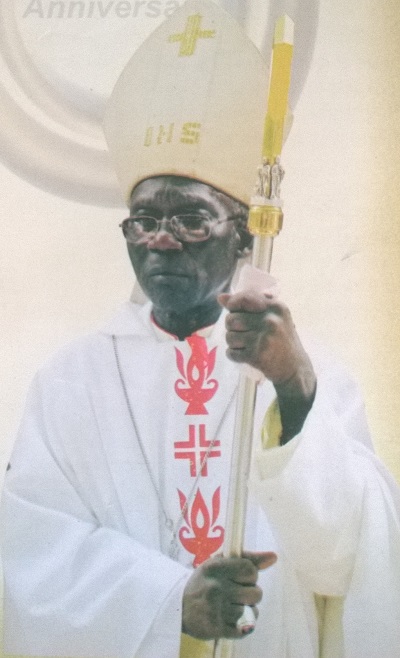
On September 8, 2011, Most Rev. Dr. Kevin J. Aje having attained the canonical age of retirement, embraced the title of “Emeritus” as the Bishop of the Diocese of Sokoto, he passed the mantle of leadership to his successor; Most Rev. Dr. Matthew Hassan Kukah (then Monsignor. M. H. Kukah). By virtue of his ordination and installation on 8th September, 2011, Bishop Matthew Hassan Kukah became the second African and Nigerian Bishop of the Diocese of Sokoto. Bishop Kukah has established Mass centres in Sokoto: St. Kevin’s Mass Centre Sokoto, St. Edward’s Mass Centre Gusau, which will soon be a Parish and a Pastoral Area at Gidan Mai Kambo, Malumfashi. Bishop Kukah has re-opened the St. Mary’s Catholic Church, Argungu, Kebbi State to the status of a Parish, which was closed down in 1948, and later became an out-station. He also opened the St. Peter’s Catholic Church, Kaura Namoda, Zamfara Sate.
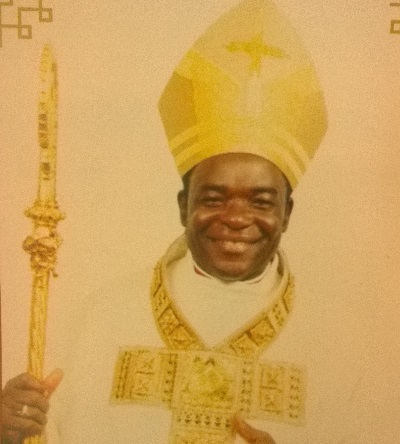
The Diocese has 36 Diocesan Priests and 6 Donum Fide Priests, 3 Dominican Priests and 2 Missionary of St. Paul (MSP) Priests, working in the Diocese. It also has 30 Dominican Sisters and 3 Daughters of Divine Love Sisters working in the Diocese. On formation to the priesthood, the diocese currently has 38 seminarians across 6 Nigerian seminaries. Also involved in the work of rural evangelization in the Catholic Diocese of Sokoto are 53 trained catechists.
